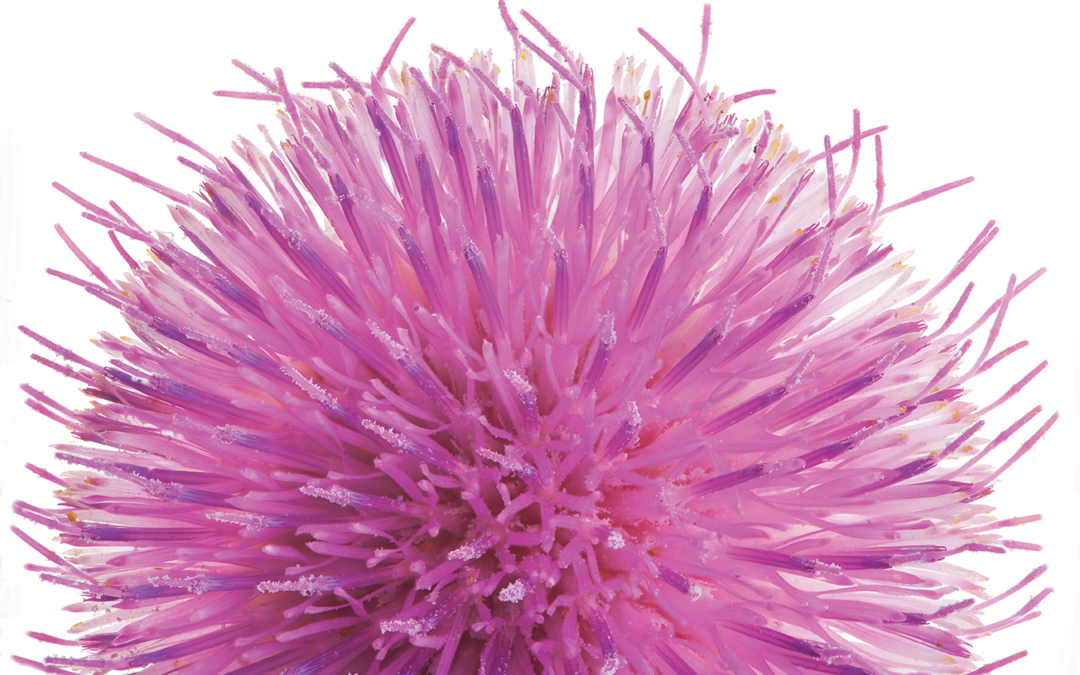A symbol of luck, prosperity, and strength.
Photographs by Robert Llewellyn
The Scottish thistle, named a resilient weed by some and claimed bold and beautiful by others, is a biennial plant that takes two years to complete its life cycle. It is from the family Asteraceae, Onopordum acanthium, and is used in traditional medicine as an anti-inflammatory, antitumor, and cardiotonic agent. The plant is widespread worldwide; it grows in Europe and Asia and was introduced to America and Australia. It is most commonly seen in dry pastures, disturbed fields and other sites, natural areas, roadsides, fields, and especially those with fertile soils such as grasslands and agricultural areas. It is known for its prickly touch. Thistles have many tiny flowers growing together in tight clusters packed so closely that the clusters look like single flowers. The flower’s hues of purple and pink are symbolic of regal splendor.
Robert Llewellyn Robert Llewellyn’s images have served as the basis for thirty-five books and numerous art exhibits. He studied engineering science at the University of Virginia and photography with Imogen Cunningham in the 1960s. With Remarkable Trees of Virginia (2008), the capstone of a statewide effort to document Virginia’s most remarkable trees, Llewellyn developed a particular focus on photography of landscapes and trees. Bob and his wife, Bobbi, live in Earlysville, Virginia and are proud grandparents of Henry, Maxwell, Redding, and Wilder. To learn more about Robert Llewellyn and his work, visit robertllewellyn.com.
Why is the thistle important?
Biennial thistles are particularly noteworthy for their high wildlife value. Their leaves, stems, flowers, and seeds offer food. Thistle seeds are an excellent snack for songbirds such as finches and cardinals. Hummingbirds will feed on the flowers of the biennial species. The thistle flowers are the favorite nectar sources for several butterflies, including fritillaries, monarchs, and skippers.
Are Scottish thistles edible?
All parts of the thistle are edible—root, stem, leaves, flowers, and seeds. The young leaves can be soaked overnight in salt and then cooked. The stems can be peeled, steamed, boiled, or eaten raw if harvested before the plant flowers.

